Ephesus ancient city history, photos, tickets, map
Step into a time capsule! Explore the architectural marvels of Ephesus (Turkey), history, photos, tickets, map an ancient city that astounds visitors with its preserved grandeur. From the iconic Temple of Artemis to the intricately detailed Celsus Library, Ephesus unveils the engineering brilliance of Roman and Greek civilizations.
Ephesus ancient city history
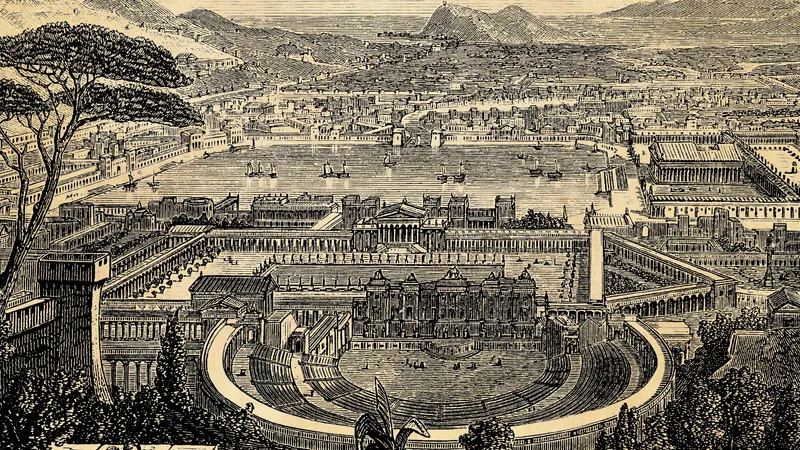
Ephesus ancient city history, photos, tickets, map
Ephesus, a captivating ancient city nestled in modern-day Turkey, boasts a history as rich and layered as the marble tiles that once adorned its grand buildings. It wasn’t just some sleepy village; Ephesus was a bustling metropolis, a prominent port city, and a cultural melting pot that thrived for centuries. As a park expert here in Turkey, I spend a lot of time surrounded by the awe-inspiring remnants of this bygone era, and I can’t wait to share its captivating story with you.
Imagine a vibrant city teeming with trade, innovation, and religious significance. Ephesus’ strategic location near the Aegean Sea made it a major commercial center. Its impressive harbor facilitated trade routes, fostering cultural exchange and economic prosperity. But Ephesus wasn’t just a marketplace; it was also a center of pilgrimage. The Temple of Artemis, one of the Seven Wonders of the Ancient World, attracted devotees from across the region, solidifying Ephesus’s position as a powerful spiritual center.
Here’s a glimpse into Ephesus’s fascinating timeline:
- Early Days (10th century BCE): Legends say the Ionian prince Androclus founded Ephesus, guided by an oracle’s message about a boar and a fish – an intriguing origin story, wouldn’t you agree?
- Hellenistic Period (333-30 BCE): Under Alexander the Great’s rule, Ephesus experienced a surge in growth and cultural influence. The city’s grand Library of Celsus, known for its stunning facade, was built during this period.
- Roman Era (133 BCE-4th century CE): This era marked Ephesus’s golden age. The city became the capital of the Roman province of Asia Minor and a major center for trade, religion, and philosophy. The iconic Theatre of Ephesus, with its impressive seating capacity, was constructed during this time.
- Byzantine and Ottoman Eras (4th century CE-19th century CE): Ephesus’s fortunes fluctuated during these periods. The city remained an important Christian center but eventually declined in significance as trade routes shifted.
Ephesus’s archaeological treasures offer a glimpse into its glorious past. Walking through the city’s well-preserved ruins, you can almost hear the echoes of merchants bartering, philosophers debating, and worshippers offering prayers. A visit to Ephesus is a journey through time, a chance to connect with the rich tapestry of history that unfolded on these very grounds.
Ephesus ancient city map
Ephesus was a major port city and a cultural melting pot that thrived for centuries. Its impressive harbor facilitated trade routes, fostering cultural exchange and economic prosperity. The city also became a center of pilgrimage due to the Temple of Artemis, one of the Seven Wonders of the Ancient World.
Here’s a glimpse into Ephesus’s fascinating timeline:
- Early Days (10th century BCE): Legends say the Ionian prince Androclus founded Ephesus, guided by an oracle’s message about a boar and a fish.
- Hellenistic Period (333-30 BCE): Under Alexander the Great’s rule, Ephesus experienced a surge in growth and cultural influence. The city’s grand Library of Celsus, known for its stunning facade, was built during this period.
- Roman Era (133 BCE-4th century CE): This era marked Ephesus’s golden age. The city became the capital of the Roman province of Asia Minor and a major center for trade, religion, and philosophy. The iconic Theatre of Ephesus, with its impressive seating capacity, was constructed during this time.
- Byzantine and Ottoman Eras (4th century CE-19th century CE): Ephesus’s fortunes fluctuated during these periods. The city remained an important Christian center but eventually declined in significance as trade routes shifted.
Ephesus ancient city map variations
Ephesus ancient city tickets
Information to help you find Ephesus ancient city tickets:
Ticket Options:
- Entrance Ticket: This is the most basic option and grants access to the archaeological site itself. Prices typically range around 40 Euros (subject to change).
- Entrance Ticket + Ephesus Experience Museum: This option combines entry to the ruins with the Ephesus Experience Museum, which offers exhibits and information about the city’s history. Prices might be around 52 Euros (subject to change).
Purchasing Tickets:
There are a few ways to purchase tickets for Ephesus:
- Online: Several websites offer ticket booking for Ephesus, including official tourism websites or travel agencies.
- Ticket Booth: You can also purchase tickets directly at the entrance gate of the archaeological site. Be prepared for potential queues, especially during peak season.
Additional Tips:
- Consider purchasing a museum pass (like the Museum Pass Turkey) if you plan to visit other museums or archaeological sites in Turkey. It can offer a cost-effective way to see multiple attractions.
- Check the official website of the archaeological site or the Turkish Ministry of Culture for the latest ticket prices and opening hours.
Ephesus ancient city photos

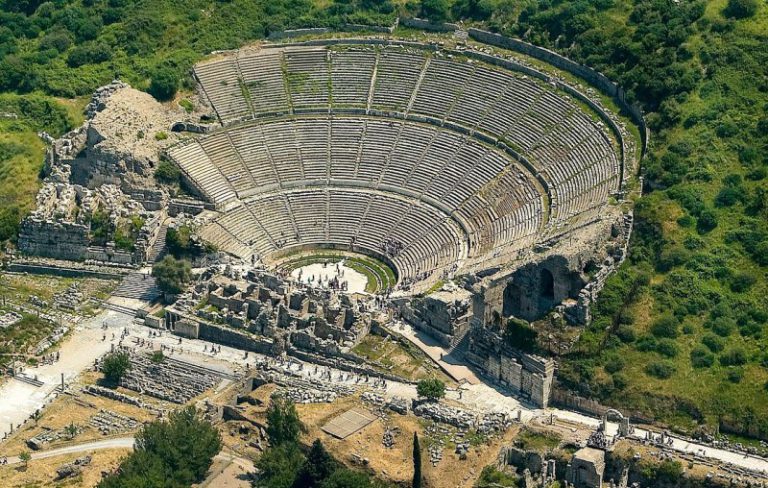

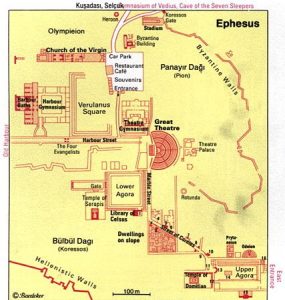
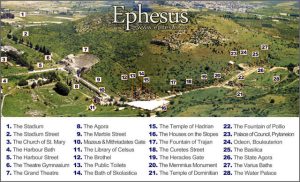
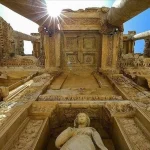

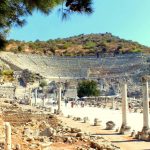


Haylie Lebsack
on said
These photos really bring the ancient city of Ephesus to life. It’s amazing to see the history and architecture preserved in such detail.
Nels Mayer
on said
Fascinating glimpse into the history of Ephesus, I would love to visit this ancient city someday.
kaleigh larkin
on said
I found this post informative and helpful in planning my trip to Ephesus. Thank you for providing details about purchasing tickets for the ancient city.
christiana nolan
on said
This map is incredibly helpful for navigating the ancient city of Ephesus. It would be great to see more detailed points of interest included on the map.